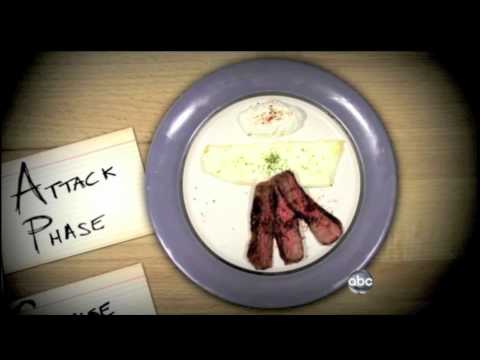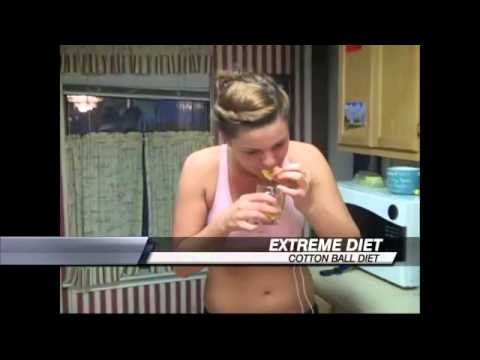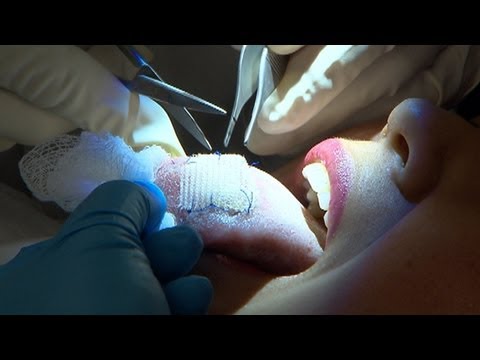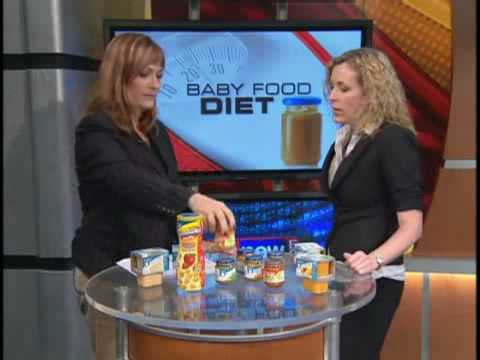10The Urine Diet
The urine diet is a bizarre weight loss practice that involves restricting your diet to 500 calories a day and injecting yourself with the urine of pregnant women. The diet can supposedly help you lose up to 0.5 kilograms (1 lb) a day. Strangely enough, this miraculous weight loss is attributed to the injection of urine, as opposed to the limit on your calorie intake. The urine of pregnant women has a special hormone called human chorionic gonadotropin (hCG), which is created by the placenta. If injected into the body of a non-pregnant person, this hormone can trick the brain into thinking that the body is pregnant, which, some say, makes the body metabolize much faster. Some of those who have tried the urine diet are extremely happy with the results and attribute their weight loss solely to the urine injections, firmly believing that it is thanks to these shots of urine that they did not feel hungry during the dieting period. Skeptics, however, argue that the urine and the hCG hormone have nothing to do with weight loss. They accredit weight loss purely to the 500-calorie diet and warn that the urine diet poses obvious dangers. For a cheaper (the urine costs between $300 to $565 for a six-week supply) and more beneficial way to lose weight, limit your calorie intake (which you must do with this diet anyway), and take up exercise instead.
9The Dukan Diet
The Dukan diet was designed in 2000 by a French medical doctor and nutritionist, Pierre Dukan. It is based on the supposed diet of primitive man, who acquired his food solely through hunting and gathering. Followers of this diet can only eat certain foods, of which there are exactly 100. Twenty-eight of these foods come from plants, and 72 come from animals. By following this strict regimen, you can supposedly lose up to 5 kilograms (10 lb) a week, but this extremely restrictive diet also suggests exercising and drinking plenty of water, which is probably a good idea anyway. The Dukan diet is made up of four stages. Stage one is known as the “attack phase,” during which you can only eat lean protein (such as beef, eggs, and fish), albeit in unlimited amounts. During this stage, you must also eat 1.5 tablespoons of oat bran, which is supposed to stifle hunger, as well as drink at least six cups of water a day. This stage lasts up to 10 days. The second stage is known as the “cruise phase” and can last up to several months. Non-starchy vegetables (such as spinach and lettuce) are added to the diet, as well as an extra half a tablespoon of oat bran. The third stage, or the “consolidation stage,” sees the addition of several specific foods, such as one piece of fruit and one serving of hard cheese. A couple of starchy foods can be occasionally consumed, and you are allowed one or two “celebration” foods a week. And finally, during the fourth and last phase called the “stabilization phase,” you are allowed to eat whatever you want except for one time a week, when you should follow the rules from the “attack phase.” During this phase, it is also recommended that you eat three tablespoons of oat bran a day and walk for at least 20 minutes.
8The Prayer Diet
The prayer diet is supposed to help you lose weight through prayer and constant communication with God. As with everything, consistency is the key, and best results will be achieved through daily prayer sessions, preferably in the morning. This will help you keep focused and make the necessary daily changes in your diet and exercise regimen. If you are stuck for suitable prayers, look no further than the Internet. Here’s one great example: “Guide me Lord, as I strive to lose weight. You are my light and my anchor, and with You I know all things are possible.” It is not just Christians who can use this diet. Members of other religions or traditions can also put this diet into use by praying to their Creator, while atheists and non-believers are told to pray to their Higher Power, Higher Self, or Nature. Of course, praying is not enough to lose the unnecessary weight. No matter how much you pray, if you just lie on the sofa all day, the pounds will not magically disappear, barring true divine intervention. Even the creator of this diet admits that prayer is just the first step in the journey of weight loss. The other necessary steps include nutritional education, healthy eating (in smaller quantities), and plenty of exercise. So perhaps the daily prayer is not that necessary after all.
7The Cotton Ball Diet
The incredibly risky cotton ball diet involves dipping cotton balls into fruit juice, smoothies, or lemonade and then swallowing them whole. Eating the cotton balls apparently makes you feel full and satisfied and less likely to overeat normal food. The diet is mainly used by young teenagers, and videos showing exactly how to do it have been uploaded to YouTube. It is believed that the diet was introduced to the general public by Eddie Murphy’s daughter, Bria Murphy, after she witnessed models desperate to stay skinny eating cotton balls dipped into juice. The cotton ball diet has extremely dangerous consequences that come with it, including malnutrition and choking, as well as the creation of a specific mass called a “bezoar,” which obstructs the intestines. In addition, most cotton balls are not made from cotton wool at all but rather from bleached polyester fibers that contain various chemicals additives. The diet has earned rightful uproar from the media, as it has some real medical harm and should not be tried at home.
6The Tongue Patch Diet
The tongue patch diet, started by Beverly Hills cosmetic surgeon Dr. Chugay, supposedly helps people lose up to 15 kilograms (30 lb) a month. It involves cosmetic surgery, during which a restrictive patch the size of a postage stamp is stitched to the tongue, making eating solid foods so painful that patients only consume liquids. The patch costs “only” $2,000. According to Dr. Chugay’s own website, patients who opt for the “miracle patch” are put on a liquid diet that fulfills all of their nutritional needs and is easy to follow. Furthermore, the patients are under the direct supervision of either Dr. Chugay himself or his staff. The side effects of this ridiculous diet include difficulty in speaking due to the swelling of the tongue, sudden waking from sleep, drooling, constant pain, and the possibility of an ulcer or an infection. It could also cause an airway obstruction, which could either partially or totally prevent air from getting to your lungs. All this for just $2,000? Thanks, but we’ll pass.
5Ear Stapling
The practice, derived from Chinese acupuncture, involves fixing surgical staples to the inner cartilage of each ear, which supposedly stimulates a specific point that curbs your appetite. Practitioners suggest leaving them in for two to three months for best results. This bizarre “diet” became popular in the 2000s, but it has been around ever since the 1970s, when it was called “staplepuncture.” The necessary components of the ear stapling diet include healthy eating and exercise, which makes the stapling seem rather useless, seeing as you will lose weight regardless of whether your ears will be stapled. As well as that, the unregulated activity can cause actual harm—ear infections or even disfigurement are a very likely consequence of this strange diet.
4Kangatarian Diet
A kangatarian diet involves eating only vegetables and kangaroo meat. These kangaroo eaters are better known as “kangatarians” and still describe themselves as being quasi-vegetarian while still eating red meat. According to this group, eating kangaroos is more ethical than eating other meat, as kangaroos are only fed wildly grown vegetation, are less destructive on land, and emit less methane (natural gas) than the cow—nature’s greatest methane generator. As well as that, most kangaroos spend their lives outdoors as opposed to cows and other animals, which are kept in horrific conditions most of their lives only to be slaughtered later. Kangatarians claim that kangaroo meat is free-range, organic meat and is often the best choice for those who only want to eat healthy, organic food. It became legal to sell kangaroo meat in 1993, and ever since then, various misconceptions about the practice have arisen, such as a strong belief that kangaroos are farmed. However, seeing as it would be difficult to obtain kangaroo meat outside of Australia, it is unlikely that this diet will become a global movement.
3Cookie Diet
The cookie diet was created by weight loss expert and author Dr. Sanford Siegal and has supposedly helped thousands of people lose an average of 7 kilograms (15 lb) a month. According to Dr. Siegal, hunger is what stands in the way of a successful diet, and thus it is best to have nine small snacks and one generous meal a day. However, the small snack cannot just be anything; it must be a specially formulated cookie that contains only 60 calories within it. The cookies, which cost $50–$60 per box, are made in Dr. Siegal’s own bakery and are only offered to the patients of his clinics. Dinner must consist of only 500–700 calories and can include foods such as chicken, turkey, or seafood. Dieters are also allowed to consume a cup of vegetables with dinner and a total of eight glasses of liquid a day. However, the cookie diet lacks vital nutritional staples that provide us with the necessary minerals and vitamins, as well as proper vegetables and fruit. Even Dr. Siegel himself admits that the cookie diet is not a diet people should stay on permanently. Besides, if you’re going to go on this bizarre cookie diet, why not use real cookies instead?
2Clay Cleanse Diet
A clay cleanse diet involves consuming bentonite clay, a type of volcanic ash, which supposedly detoxifies the body by absorbing toxins and carrying them out of you. Bentonite clay includes many minerals such as calcium and magnesium and has been dubbed “healing clay.” When taken with water, bentonite clay swells up in your body and makes the dieter feel full. Watch this video on YouTube A study testing the safety of clay was conducted in 2005 at Texas Tech University in Lubbock, during which 50 volunteers consumed various amounts. While no evidence was found suggesting that bentonite clay is good for detoxification, products containing bentonite clay were declared somewhat safe. Nevertheless, it is not advised to take more than one teaspoon of bentonite clay a day, and plenty of water must be drunk with it as well as throughout. There is no real scientific evidence that bentonite clay actually helps with weight loss, and the consequences of the “clay cleanse” diet include constipation, bowel obstruction, dehydration, low blood pressure, and nutritional deficiencies. Thus, the risks of this diet certainly seem to outweigh the merits.
1Baby Food Diet
The baby food diet was supposedly started by the fitness guru Tracy Anderson and involves replacing breakfast and lunch with 14 jars of baby food. A healthy dinner with plenty of vegetables and practically no fatty meats completes the day. The really interesting thing about the baby food diet, however, is that it is not actually a diet for weight loss but rather a maintenance diet. Thus, before you embark on a baby food spree, you should first lose all the unnecessary pounds since the baby food diet only helps you to stay thin—it doesn’t actually make you lose weight. Since baby food is mostly made from fruits and vegetables, your intake of these nutritious plants will increase. Baby food also usually comes in small packages with limited serving sizes, which can help you control the amount you eat. As well as that, no cooking on your part will be required. However, no scientific research has been done—it is unclear how baby food might affect your body. In addition, this diet might cause fiber shortfall, and it is unclear whether this diet does actually help to maintain your body weight. And with no real scientific research, who would actually want to snack on gross baby food when there are plenty of other options available? Laura is a student from Ireland in love with books, writing, coffee, and cats.
























